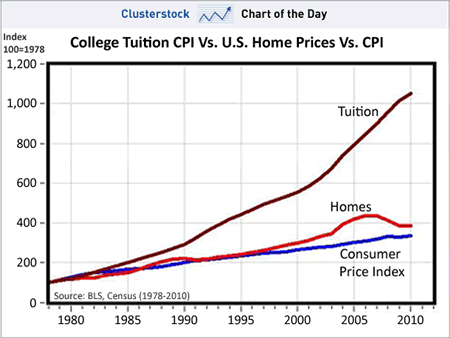Previously, President Obama made a proposal for the federal (75% contribution) and the state governments (25% contribution) to provide two free years of (tuition for) community college to “everybody who is willing to work for it,” Obama said in a video message released by the White House [2]. To qualify, the community ‘colleges would be required to offer programs where credits could count toward a four-year college and university degree’ [2]. While this is a step in the right direction, 2 years of community college amounts to an Associate’s degree, resulting in weekly earnings below the median wage [3]. Currently, only 16% of two-year college students go further to earn a bachelor’s degree [3]. If most well-paying jobs require 4 year degrees, why should we only contribute half of the education required to later earn a median wage to students? This 2 year free community college tuition proposal faced opposition by the Conservative party, who holds the majority of seats in the House of Representatives and is likely to strike it down.
Senator Bernie Sanders goes steps further, declaring “every American who studies hard in school can go to college regardless of how much money their parents make and without going into debt” [4]. He plans to stop the federal government from profiteering on student loans, “Over the next decade, it has been estimated that the federal government will make a profit of over $110 billion on student loan programs” [4]. He will also allow students with existing loans to refinance them to lower interest rates. He wants low income students to have 100% of their financial needs covered at their college or university! He plans to pay for this project by imposing, “a tax of a fraction of a percent on Wall Street speculators who nearly destroyed the economy seven years ago. More than 1,000 economists have endorsed a tax on Wall Street speculation and today some 40 countries throughout the world have imposed a similar tax” [4]. Over time, the benefits of this innovative plan will outweigh the cost by a growing American economy that impacts all other economies in the world.
Other candidates claim to have similar plans, but don’t have the same motives and methods to achieve the goals. During the first 2016 Democratic Presidential Debate, it seemed all of the candidates had shifted more to the left. For example, Hilary Clinton spoke negatively of Wall Street activity, while Citigroup, Goldman Sachs, and JP Morgan have consistently been top donors throughout her career!
Since Wall Street relied on us to help them in 2008, we should expect them to do the same. We should impose the cost of taxing speculation that Senator Sanders recommends to benefit the collective public and the economy with access to higher education. This will encourage more people to educate themselves, leading to a growing economy and a sustainable future.
Sources:
Image from [1]
- My Money Blog,. 'Charts: College Tuition Vs. Housing Bubble'. N.p., 2010. Web. 22 Oct. 2015.
- Reuters,. 'UPDATE 1-Obama Proposes Idea Of Two Free Years Of Community College'. N.p., 2015. Web. 22 Oct. 2015.
- Kohli, Sonali. 'Obama’s Dream Of Free Community College Is Headed To Congress'. Quartz. N.p., 2015. Web. 22 Oct. 2015.
- Bernie Sanders,. 'On The Issues: It's Time To Make College Tuition Free And Debt Free'. N.p., 2015. Web. 22 Oct. 2015.
